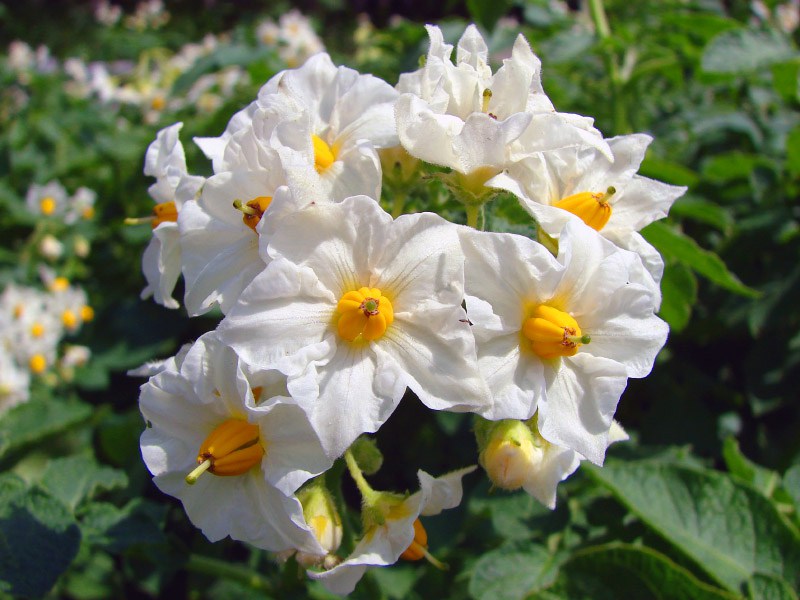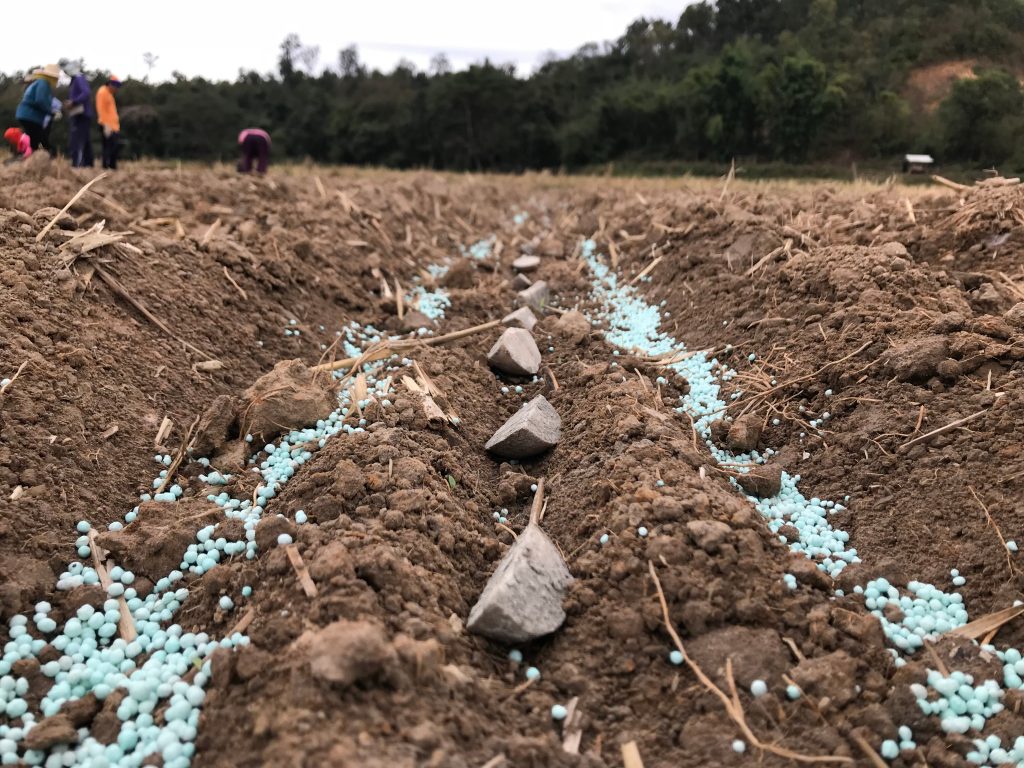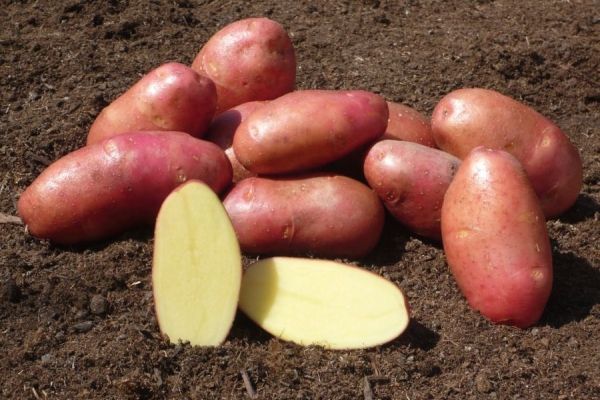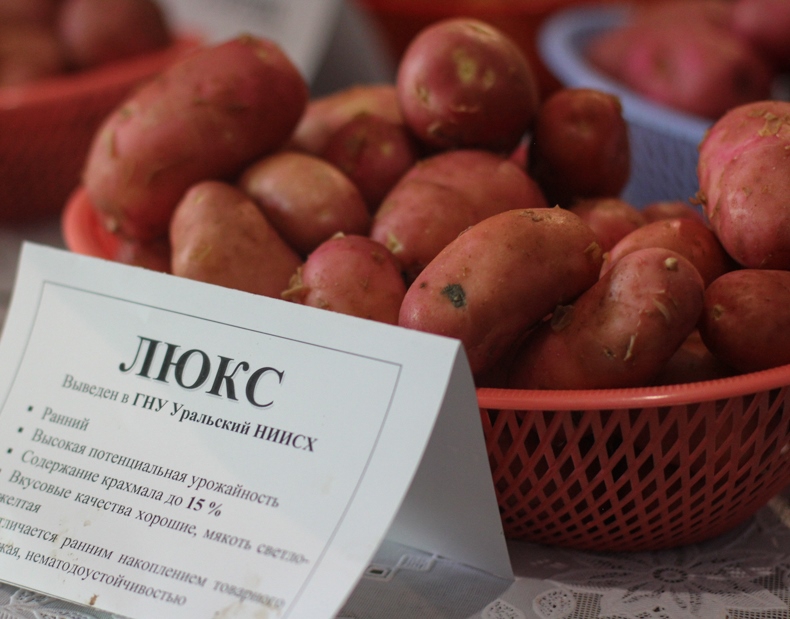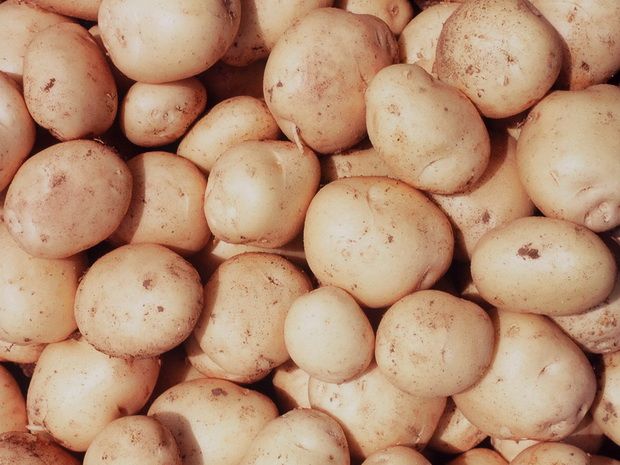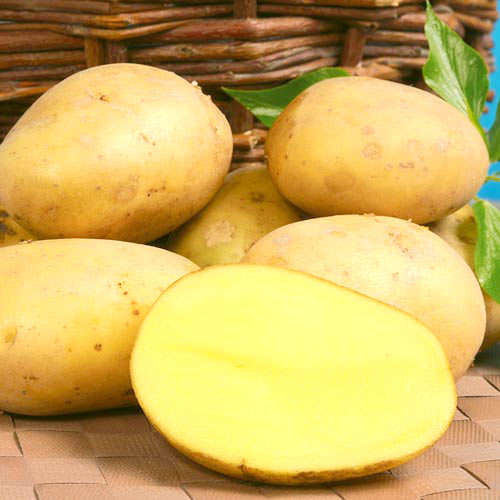Content:
The growing conditions for any potato variety in most cases are determined by the specific area in which it is supposed to grow (more precisely, the climatic features of the region). This is exactly the case with potatoes under the name "Nakra", which have long and successfully been cultivated in vast territories stretching from the Volga regions to the Far East itself.
History
Several scientific and production associations were involved in the creation of the Nakra potato variety, whose specialists at one time were seriously engaged in the selection of this hybrid. Their research was based on the desire to obtain a weather-resistant vegetable product that would be maximally protected from most of the known garden pests and specific diseases.
As a result of long-term research carried out by the Narym selection station, and subsequent selection, a wonderful varietal hybrid was obtained, which was named with a short word "Nakra". In the State Register, it is listed as finally registered since 2000.
At present, a pleasant-looking and quite tasty product with this name belongs to the best varieties common in most regions of Russia. This potato product is focused on cultivation in especially "difficult" climatic conditions of the Volga region and remote areas of the Far North.
The potato of this variety has taken root well in other areas in the vast expanses of Russia, lovers of garden crops speak of it purely positively.
Description and characteristics
Potato culture Nakra is a variety of purely Siberian and so-called "colored" varieties, which are usually characterized by the following characteristics:
- Their tubers have a strictly oval or round shape.
- The weight of one sample can range from 65 to 160 grams.
- The number of potatoes growing in a tuber under one bush, as a rule, is at least 6-11 pieces.
- Their peel has a characteristic reddish tint; it is rather smooth to the touch and not very rough.
A complete description of a given variety should include an overview of secondary characteristics such as the size and depth of the eyes (they are not very deep and small), and the color of the flesh, which is yellowish.
The following can be said regarding the characteristics of the aerial part of this vegetable plant:
- The bush is relatively high (up to a meter) and erect.
- The leaves growing on it are of medium size and differ in slightly wavy edges.
- On the potato Nakra bush, the characteristics of which can be found in this section, at the time of flowering, small inflorescences bloom with a disproportionately large corolla of a red-purple hue.
The time of full ripening of this culture, measured from the moment of planting the tubers, is approximately 90 days.
When describing the attractive features that characterize this variety, one should pay attention to its excellent taste, as well as to the high starch content in the tubers (18-22 percent).
In addition, Nakra potatoes have the following consumer characteristics:
- The shelf life of this product reaches about 95% (this means that the harvested potato crop can be stored for a long time).
- Quite high yields (from 200 to 300 centners per hectare).
- Immunity to a number of Solanaceae garden diseases: late blight, for example, or to common scab.
When describing, it is necessary to mention one more consumer property of Nakra potatoes, namely the suitability of this product for obtaining high-quality starch and for the production of delicious-tasting chips.
Growing features
Sprouting tubers
Approximately 2-3 weeks before planting, tubers, selected specifically for these purposes, are taken from storage and germinated. The latter means that they are placed in a well-lit and sufficiently warm room (at a temperature of about +18 degrees). This preparatory procedure allows you to significantly reduce the time of their maturation after planting in the ground, as well as to identify possible diseases at the earliest stage.
If there are any deviations in the blanks prepared for planting, it will be possible to find suspicious spots on the peel or blackening of the tips of the sprouts, for example. If the user chose to buy selected potatoes for planting in a specialized store, experts advise choosing a material that already has well-sprouted, healthy and not very long sprouts.
Disembarkation
When determining the exact time when to plant potatoes in the spring, experts recommend focusing on the current state of the weather.
The average temperature of the soil by this time should be at least plus 8 degrees (taking into account the moisture content of the earth in the beds, this indicator can be adjusted in one direction or another). Like many well-known varieties, Nakra potatoes do not tolerate too heavy soil, the preferred planting depth of tubers is chosen from 8 to 10 cm.In this case, the optimal distance between planting holes should be from 30 to 35 cm, between adjacent rows - approximately 60- 70 centimeters.
Before planting, pre-selected tubers must be treated with fungicides (biological product "Fitosporin", for example). In the case of mechanized disembarkation, they must be sorted by linear dimensions.
Plant care
Caring for growing plants is reduced to the following typical procedures:
- Hilling and loosening the soil.
- Watering and preventive spraying (disinfection).
- Fertilization and feeding.
Hilling bushes after rains and watering can be carried out as early as a week after planting, which improves oxygen access to the roots (tubers) and fight weeds. Watering potatoes under normal conditions is organized three times during the entire growing season: after cutting the shoots, when opening the buds and immediately after flowering.
Nutrient mixtures are applied to the beds approximately 30 days after planting (approximately in May or June). Typical fertilizers designed specifically for potato crops and organic matter (manure or bird droppings at the rate of 200 grams per unit area) are usually used as supporting additives.
When caring for Nakra potatoes, special attention is paid to protecting it from such a common pest as the Colorado potato beetle.
Advantages and disadvantages of Nakra potatoes
The advantages of this culture, which can be considered as its features, include:
- Unpretentious care.
- Undemanding to the quality of the soil at the planting site.
- Wonderful and unique taste.
- Consistently high yield.
- Long shelf life.
The easily removable disadvantages of this culture include its weak protection against such a common disease as a nematode, as well as the need for preventive treatment of growing sprouts.
In the final part of this review, it should be noted that if you want to grow the most prolific and frost-resistant potatoes on your site, it is best to focus on this particular variety. Most Russian gardeners prefer to cultivate this vegetable crop, which does not require excessive expenditure of time and effort for its growing season.

